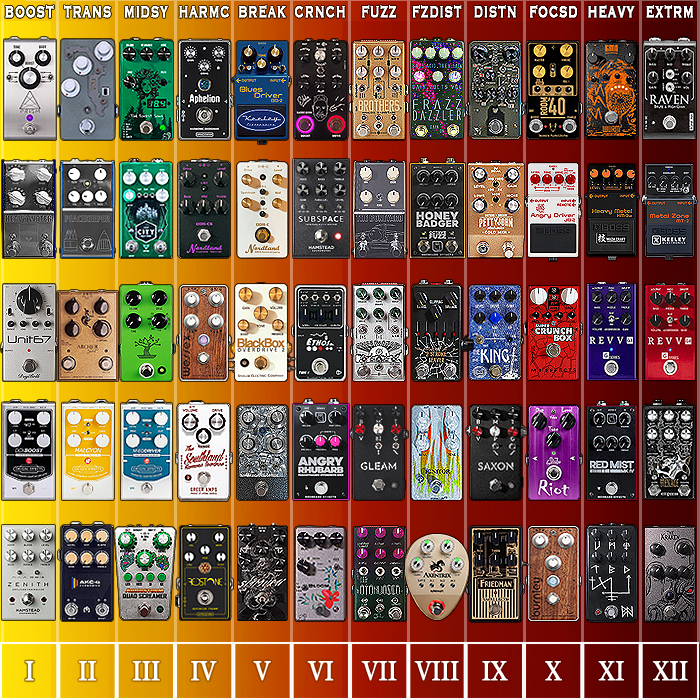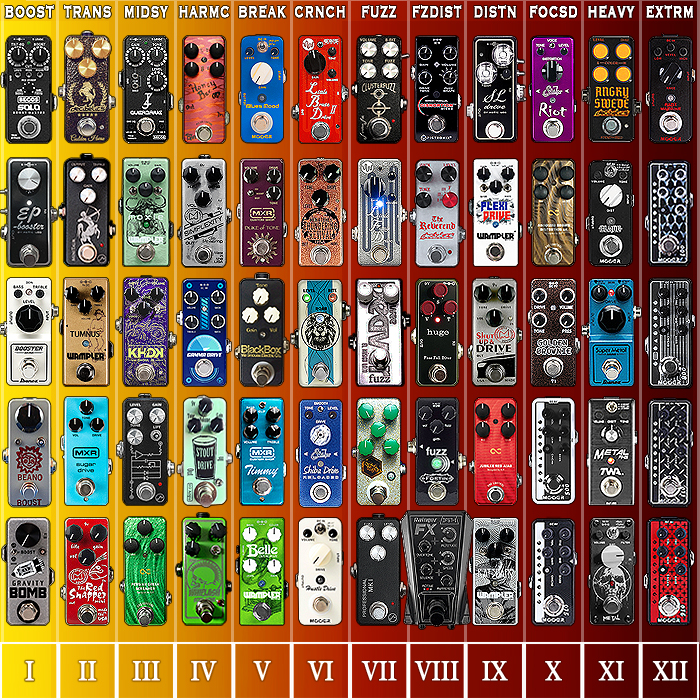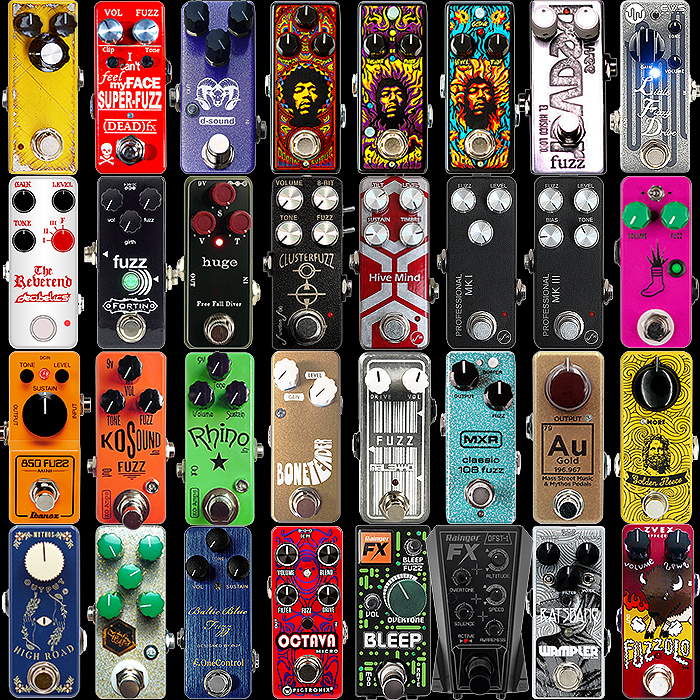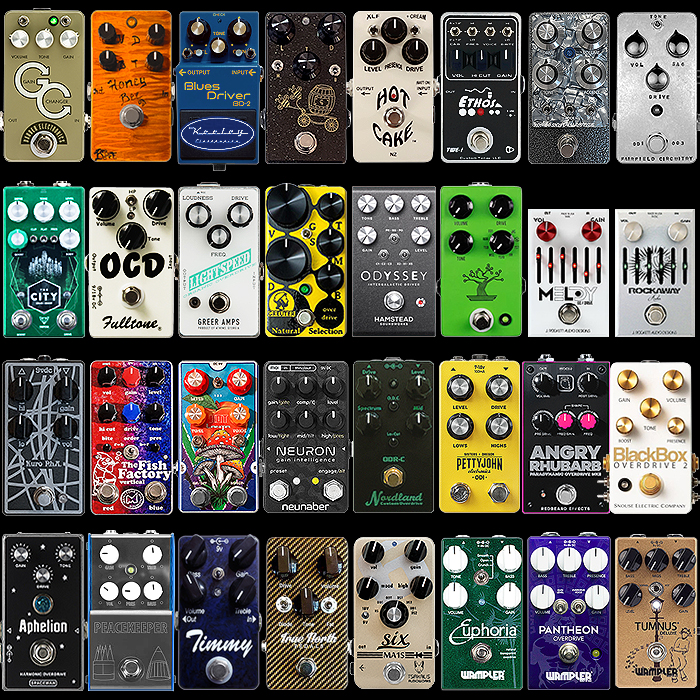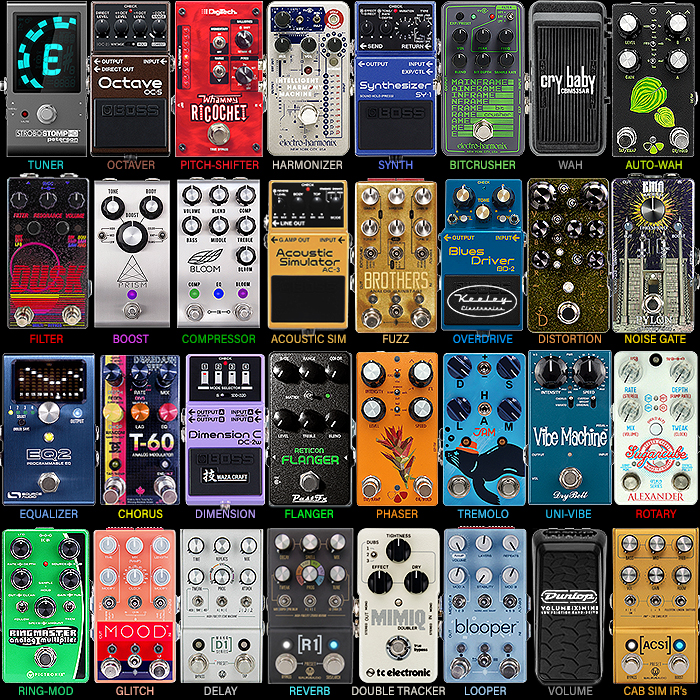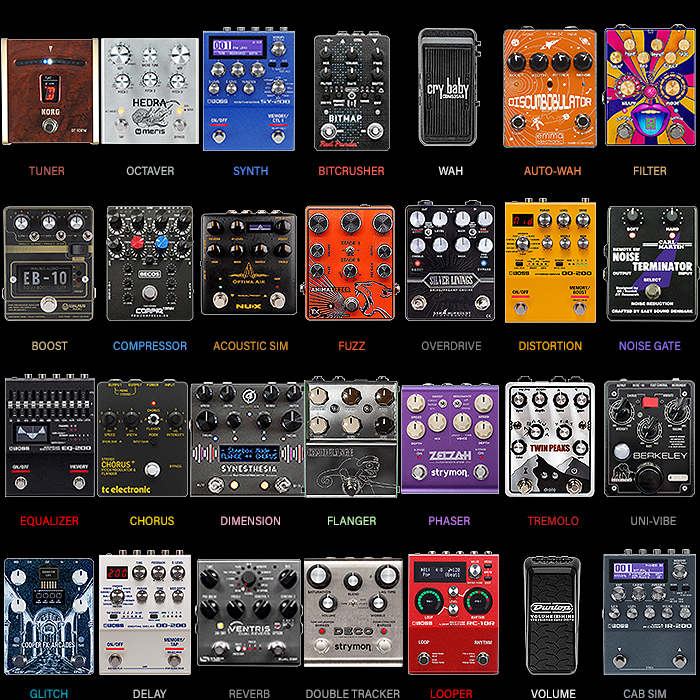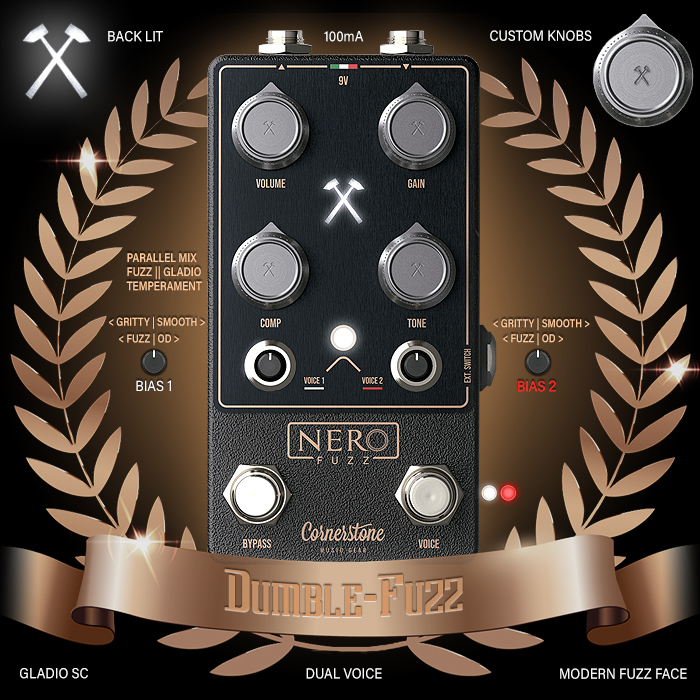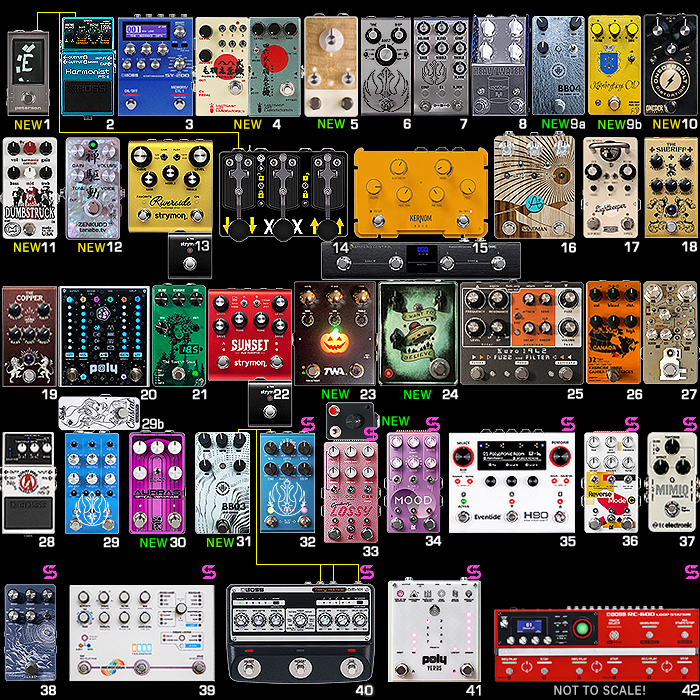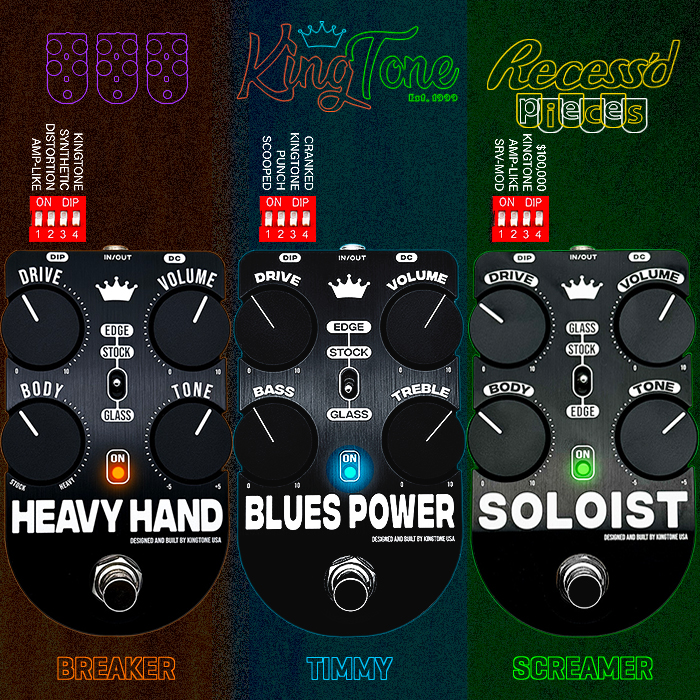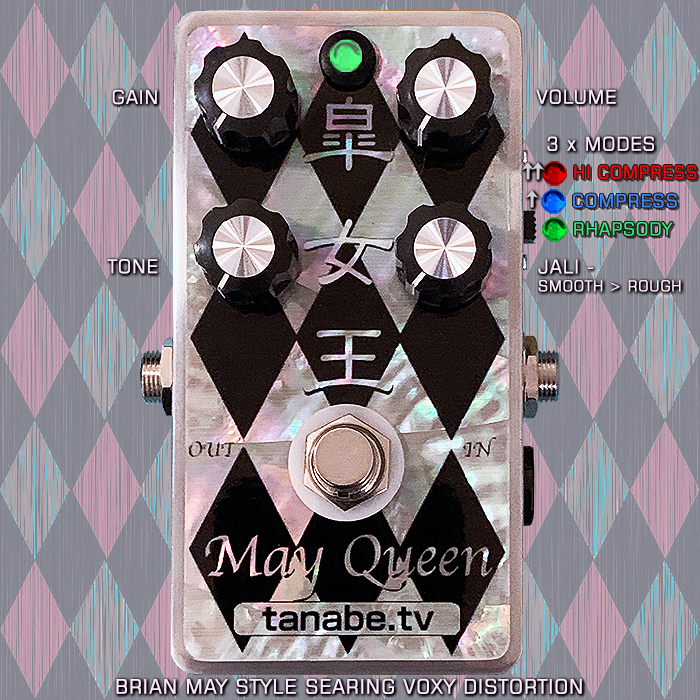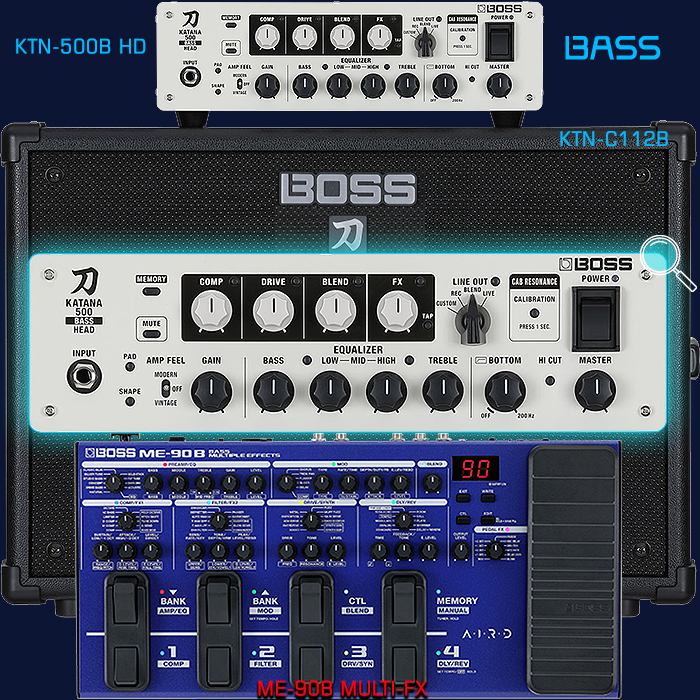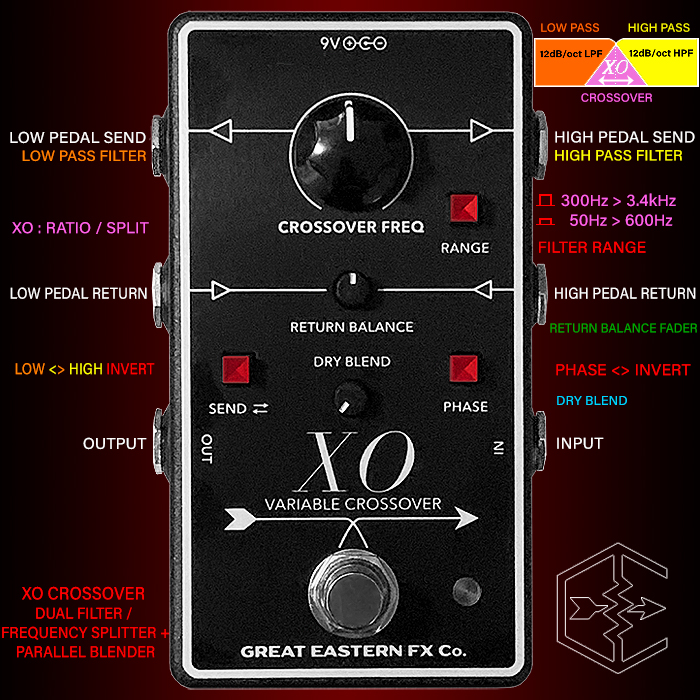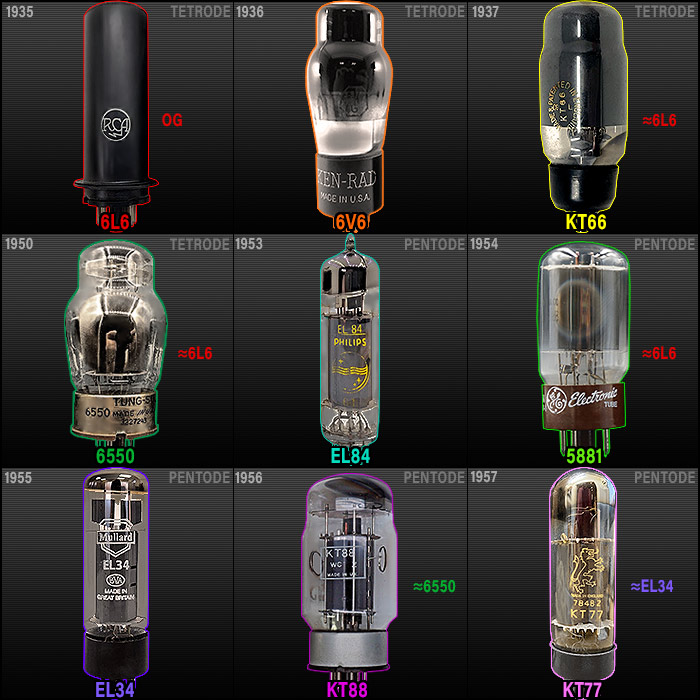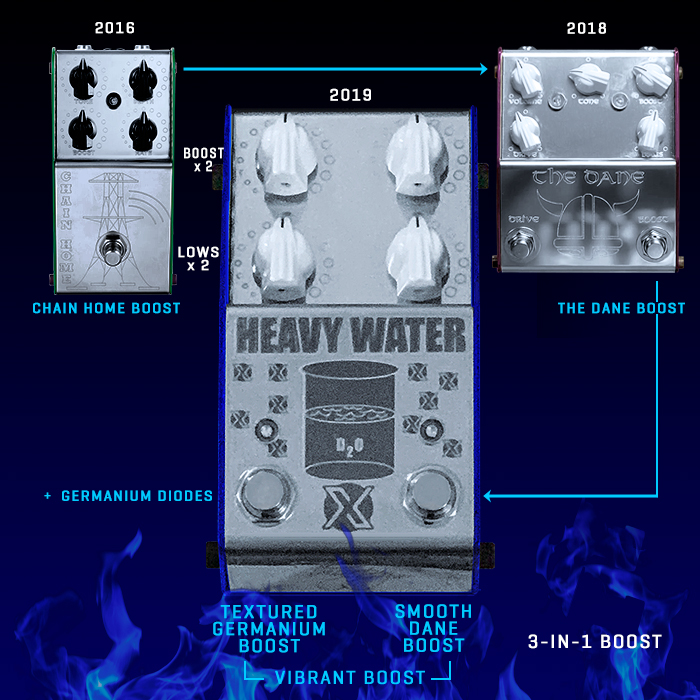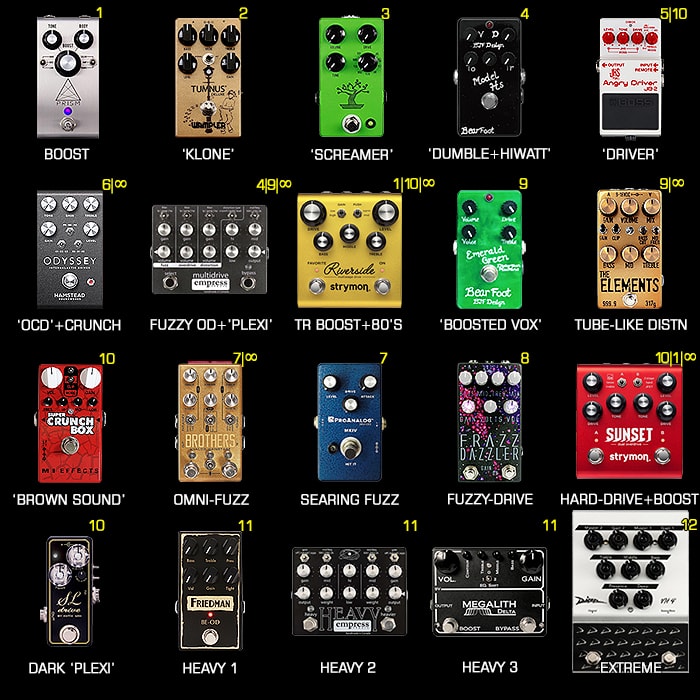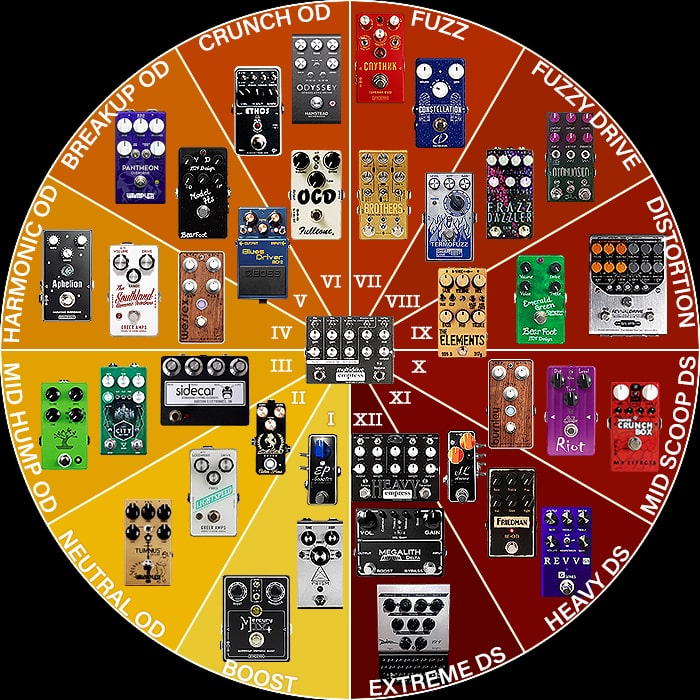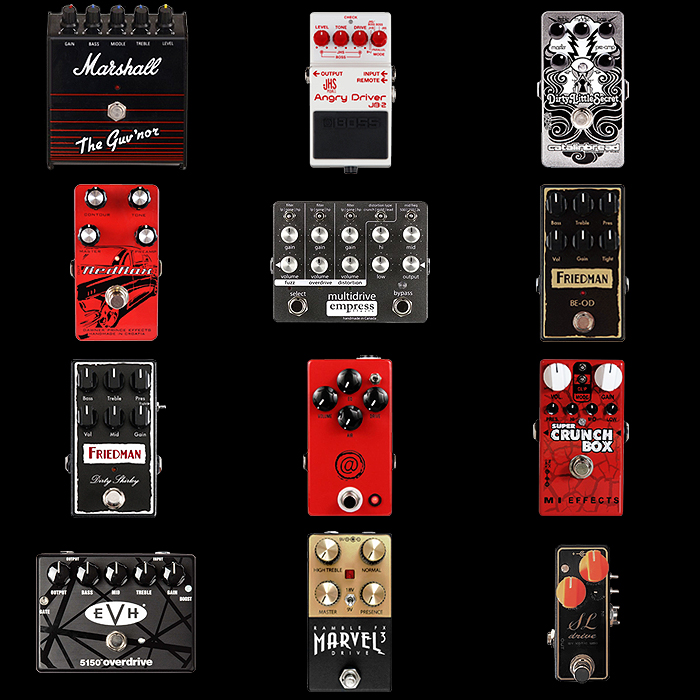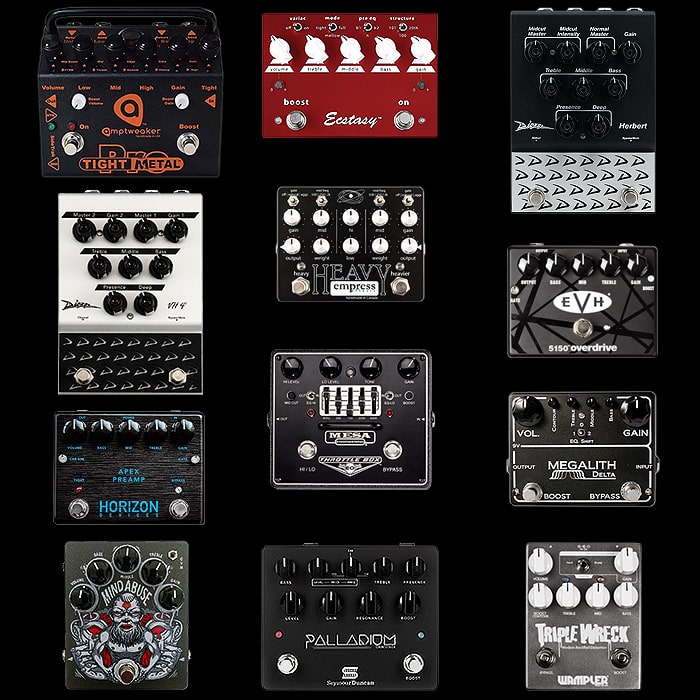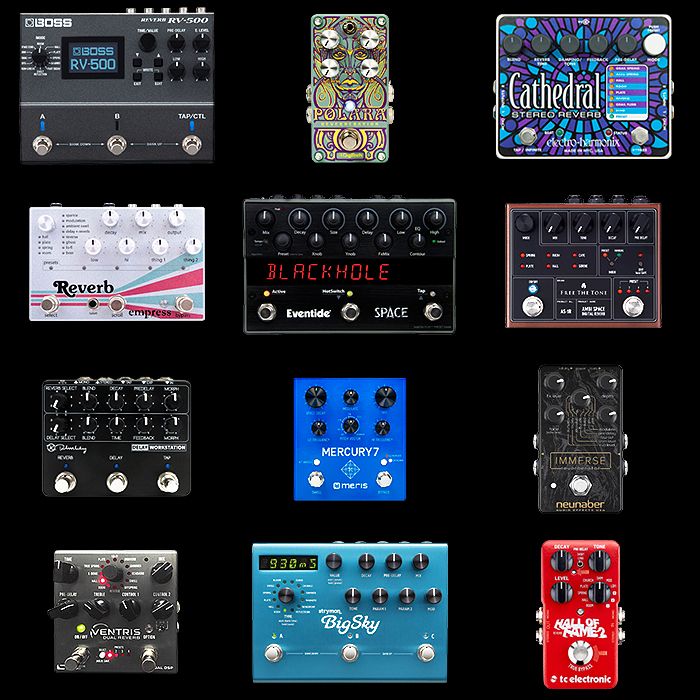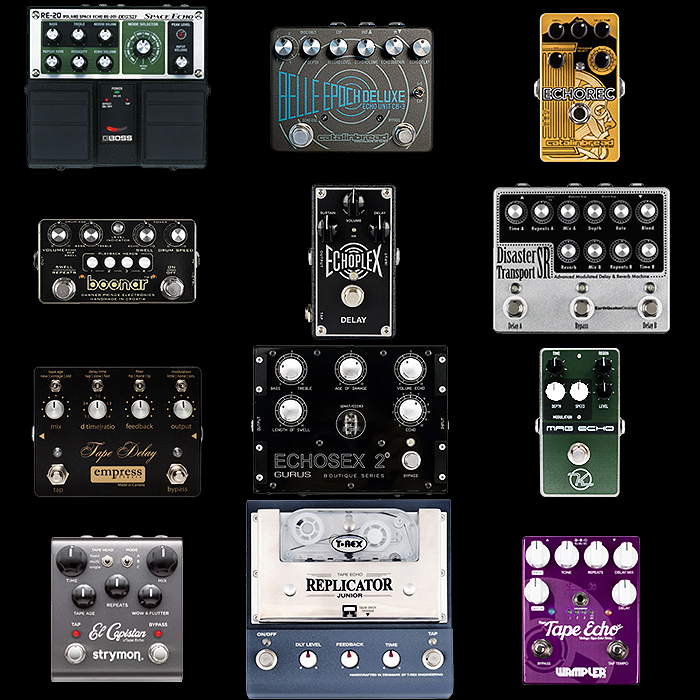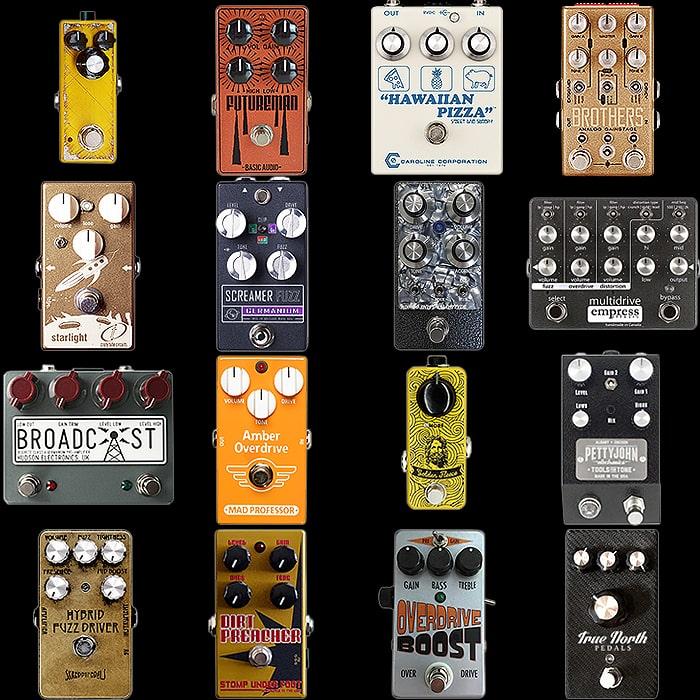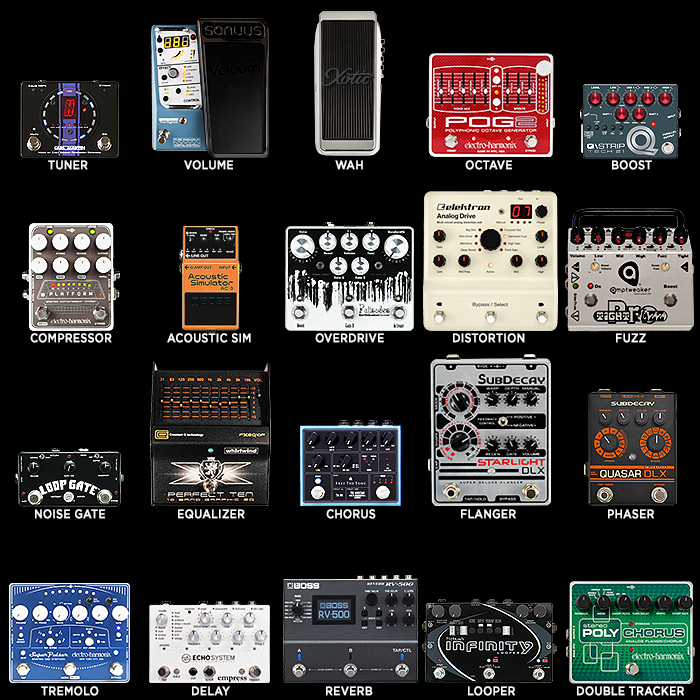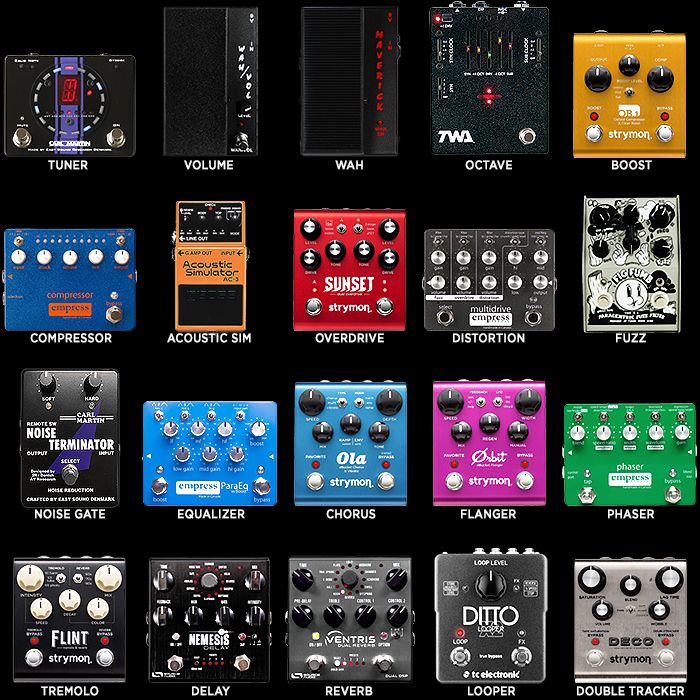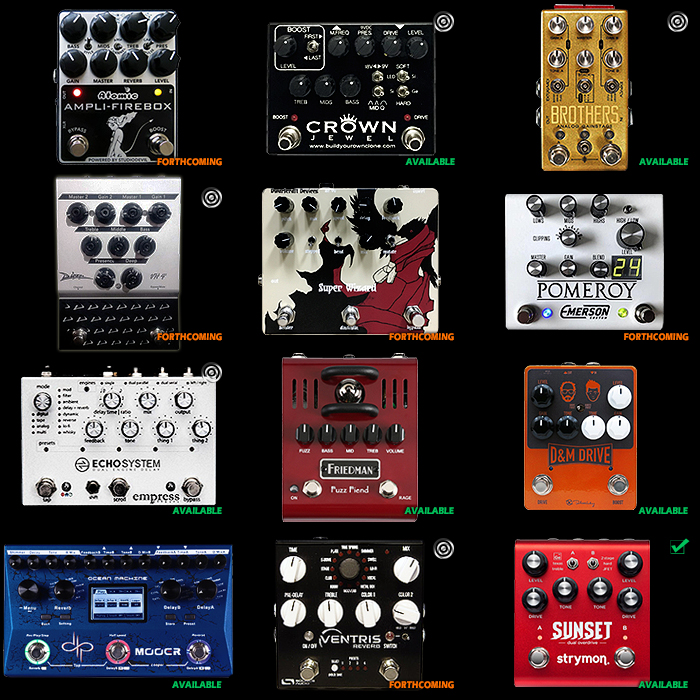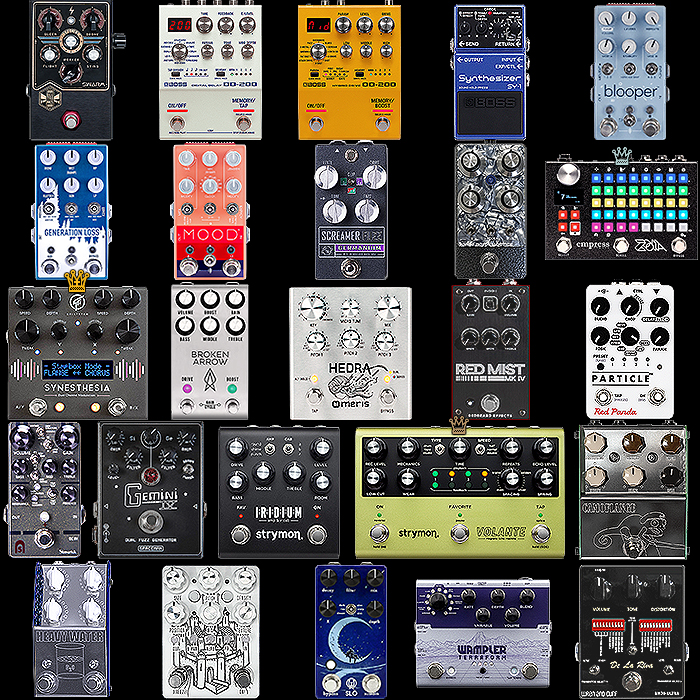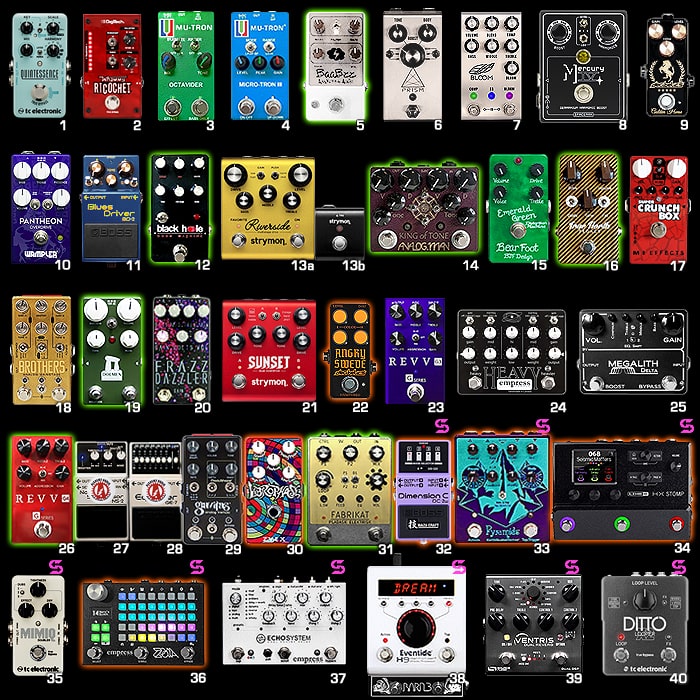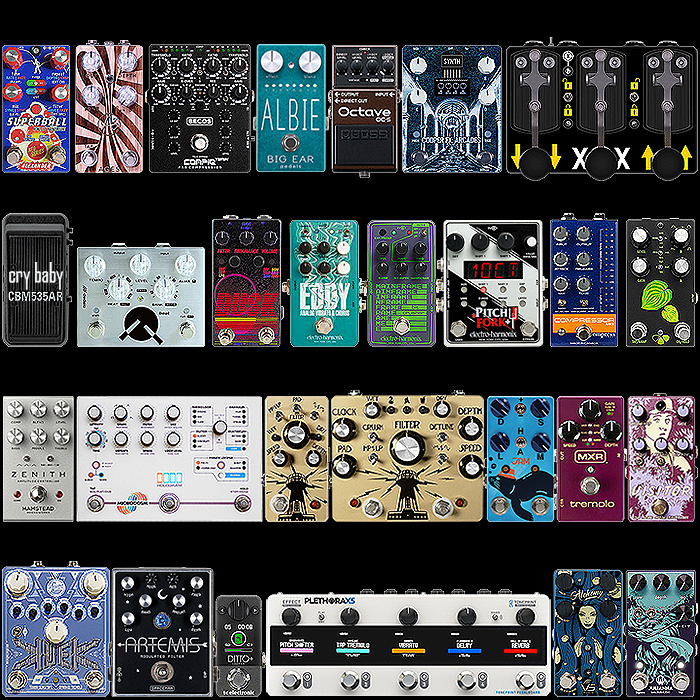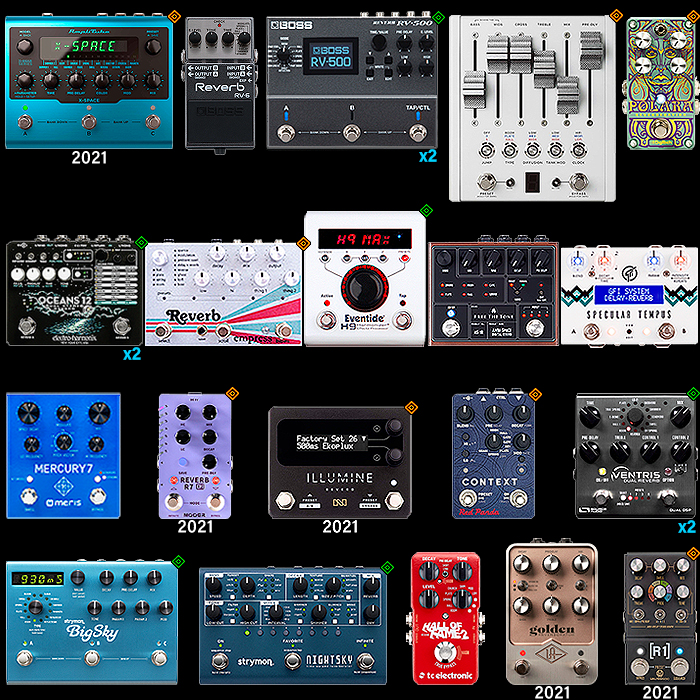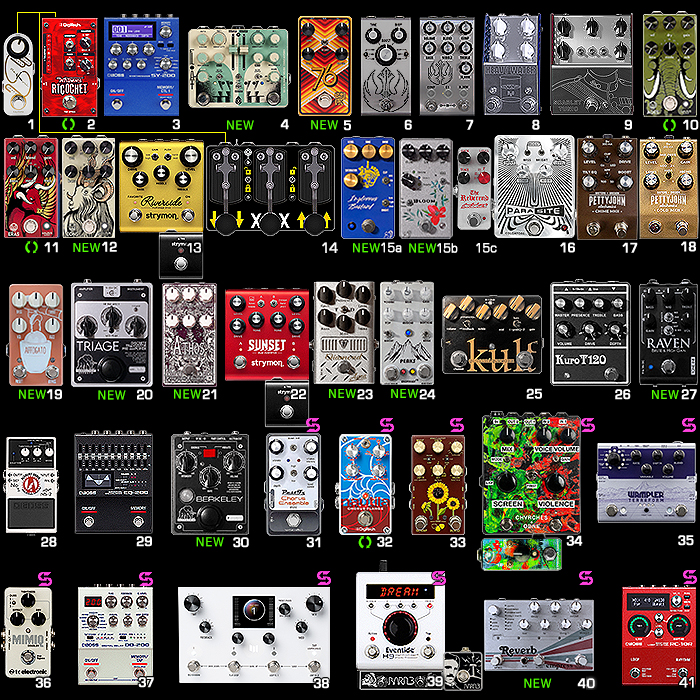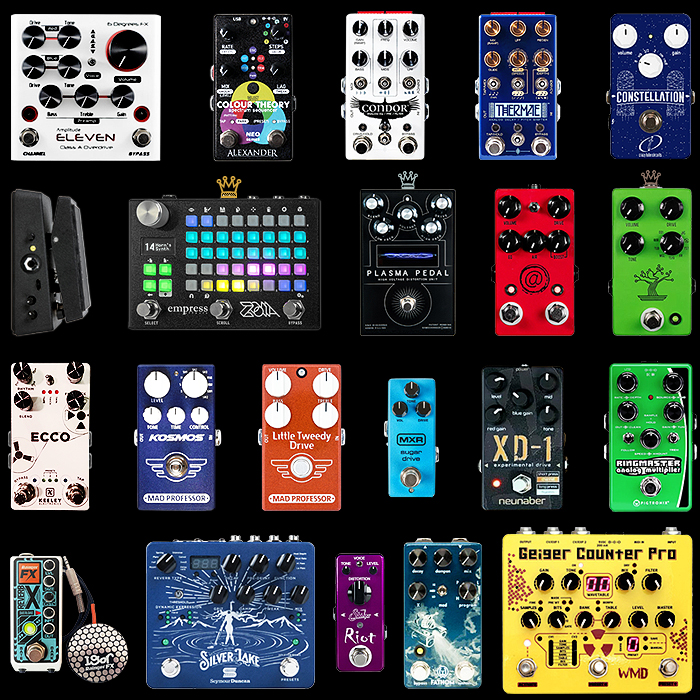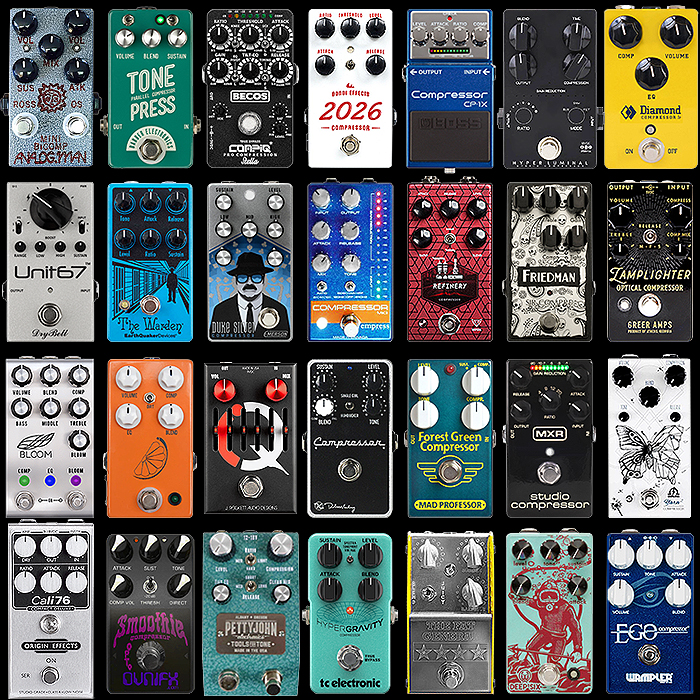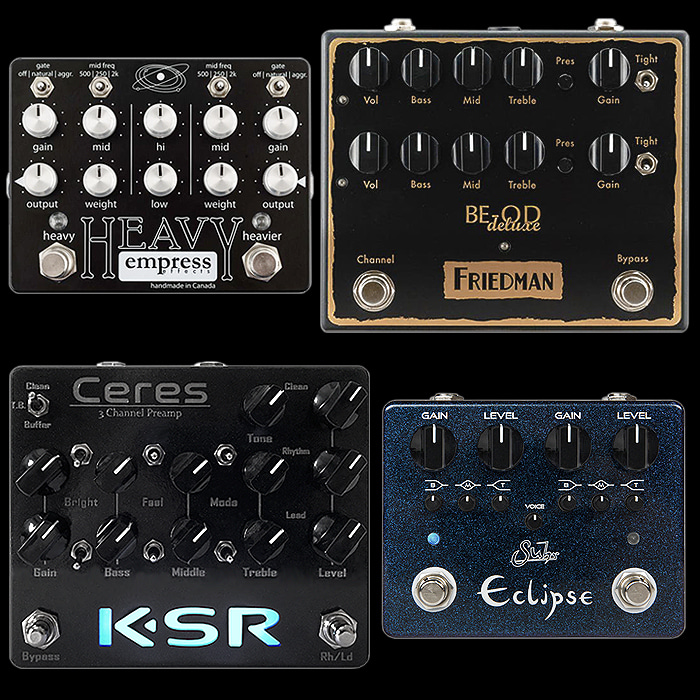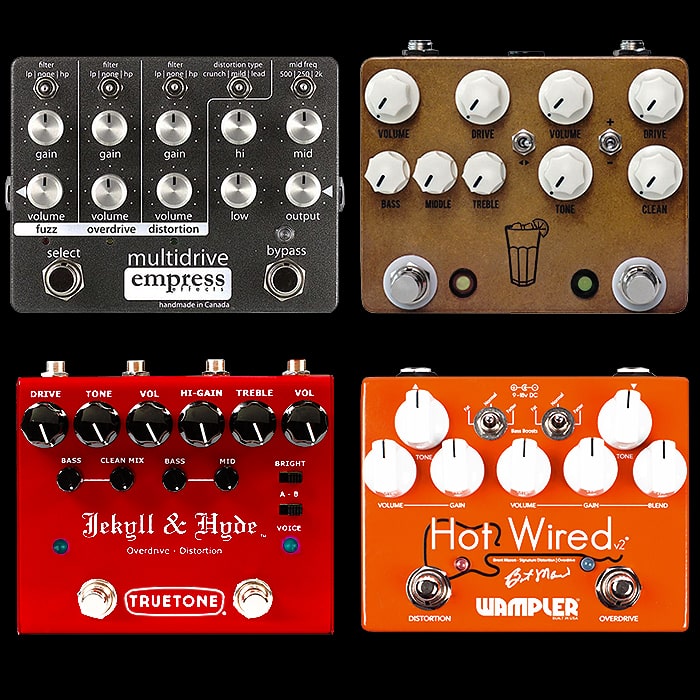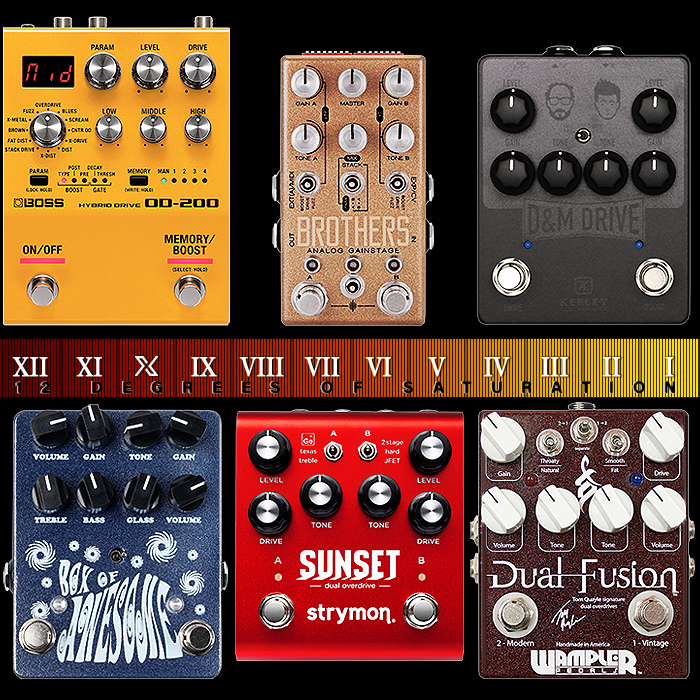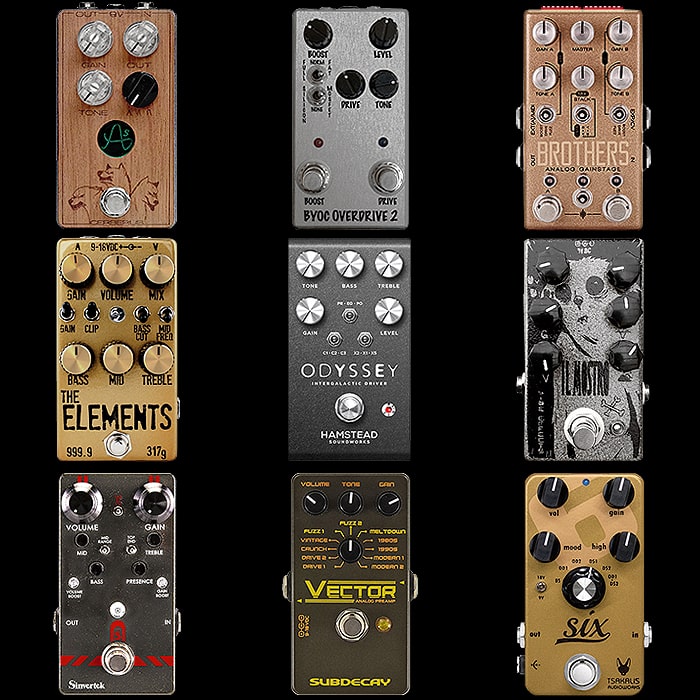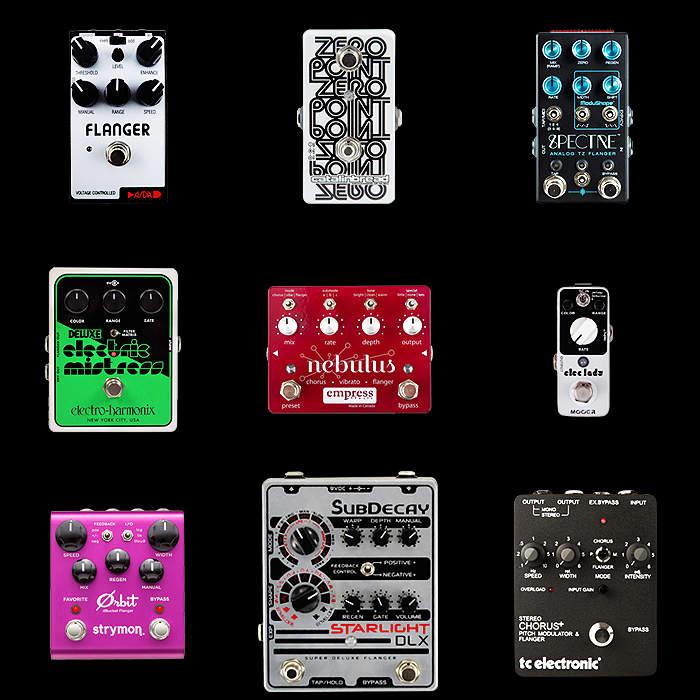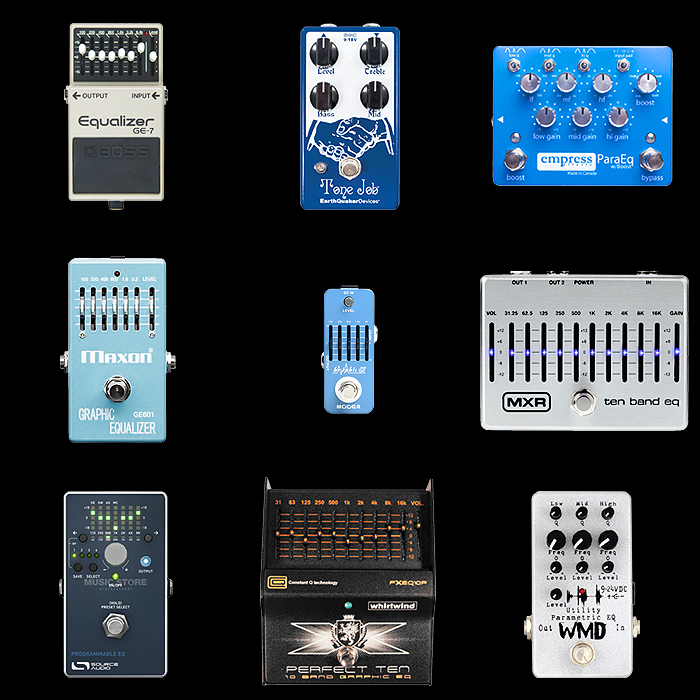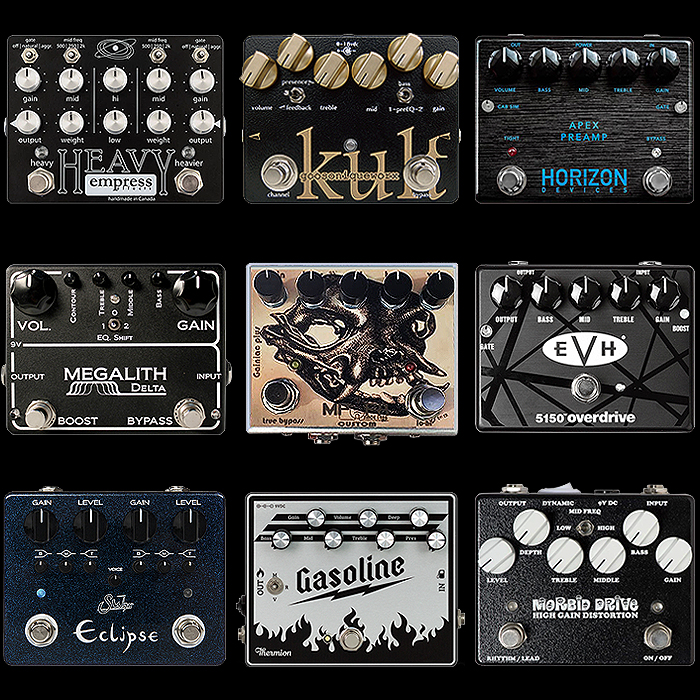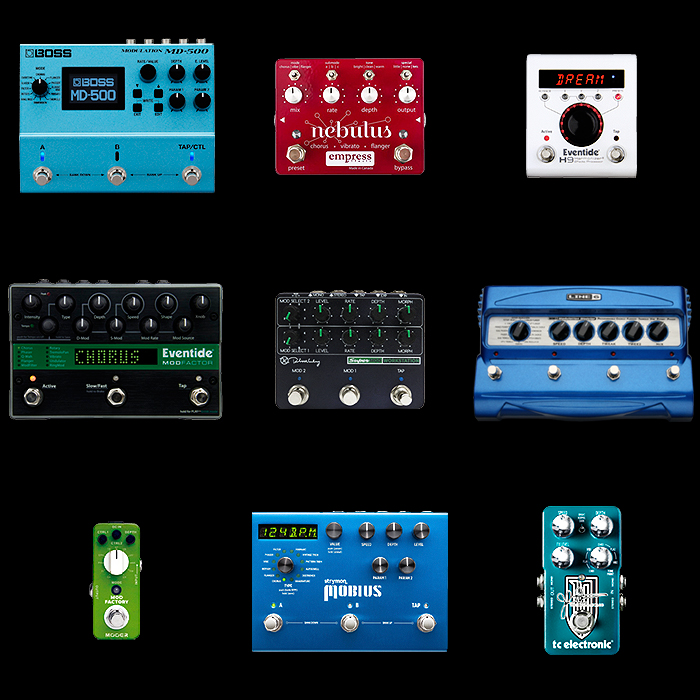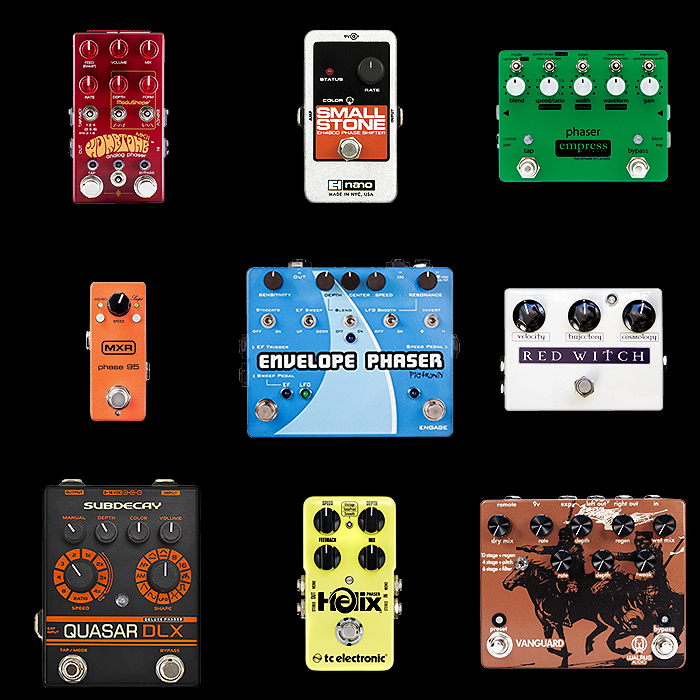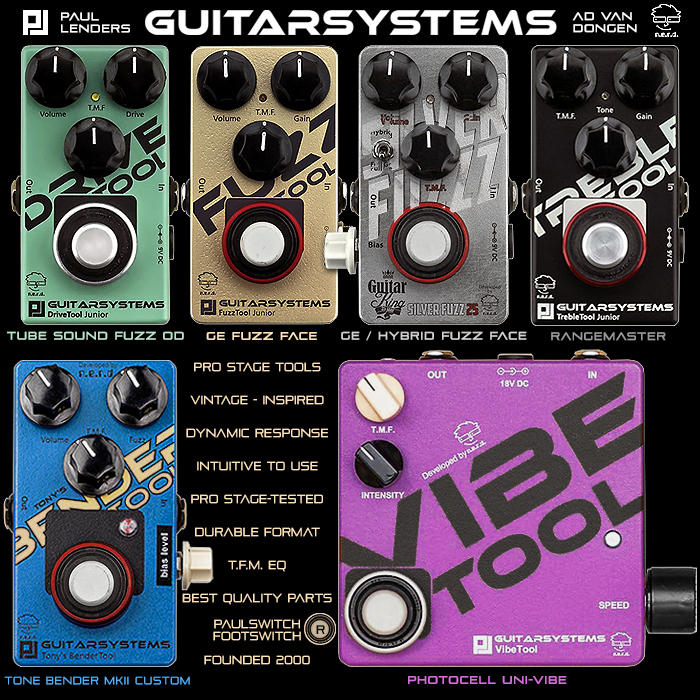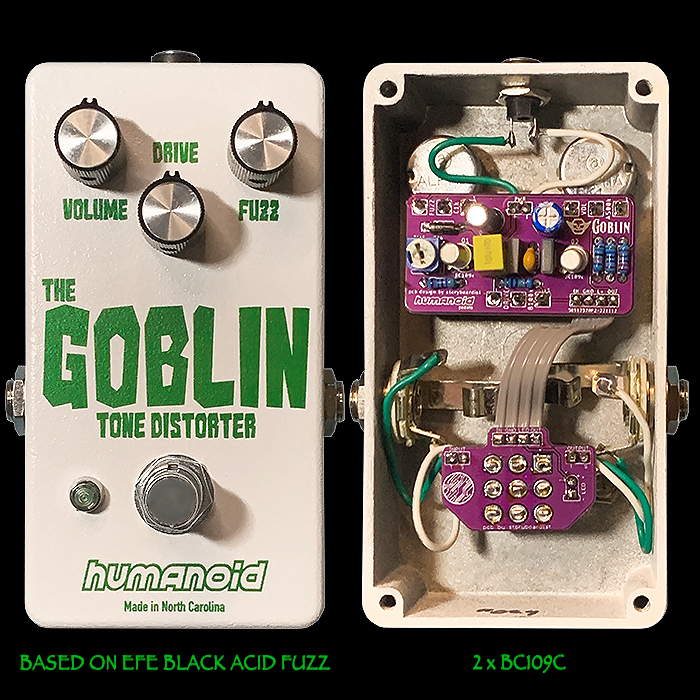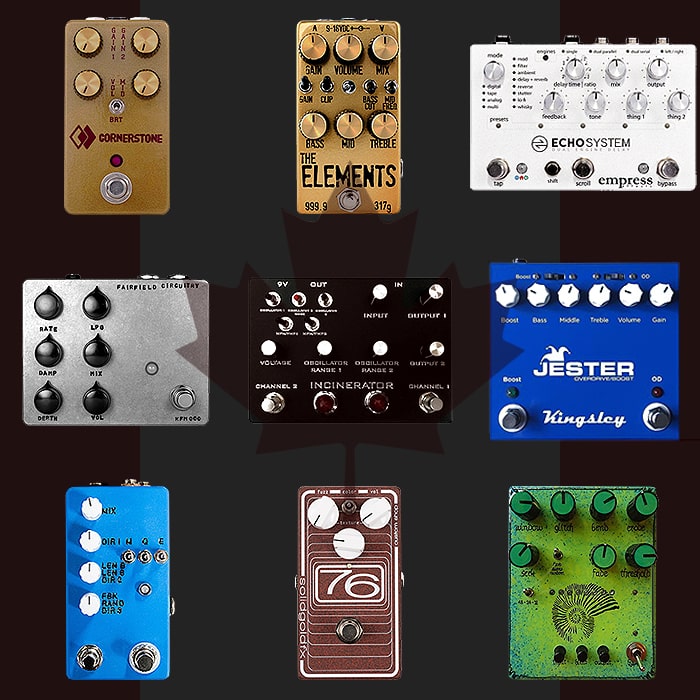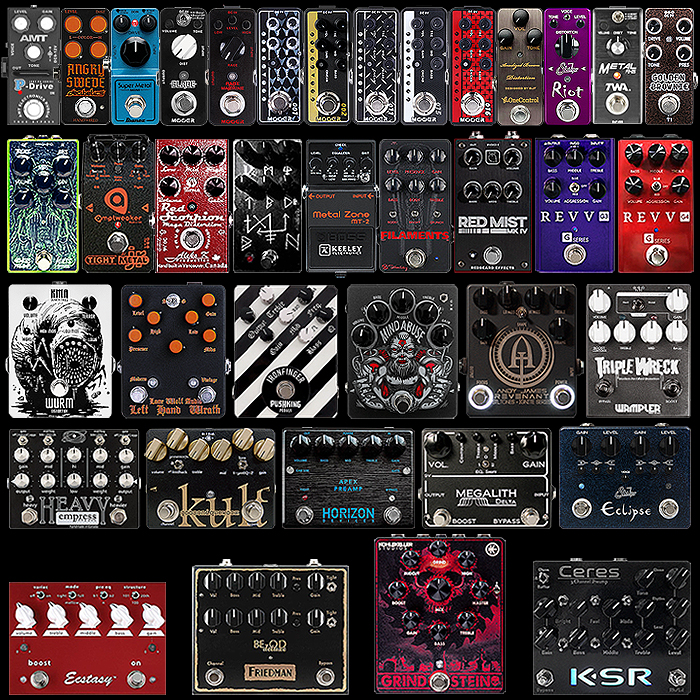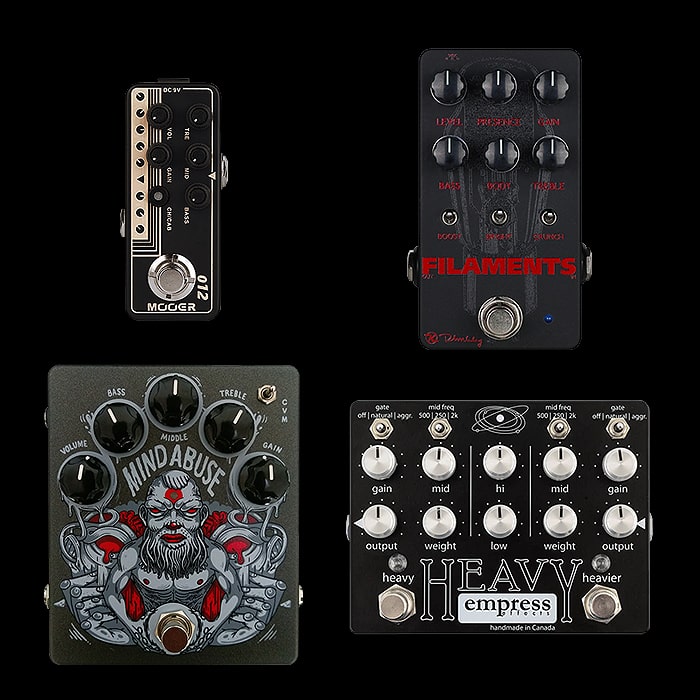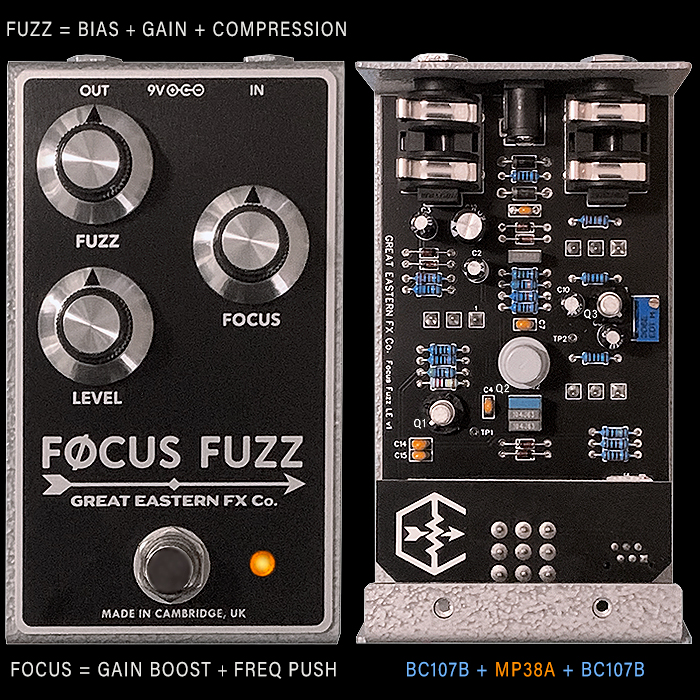Empress Effects Fuzz, Germ Drive and Distortion Singles in Series vs the Parallel Blended Multidrive

I’ve long wanted to do this exercise - where I compare the individual constituent parts of the Multidrive to the combined channels of that original mothership pedal. I’ve had the Multidrive in the reference collection for quite some time now - and for a long time it was a mainstay in my pedal-chain - and indeed I still frequently reference it as one of my favourite ’Fuzzy-Drive’ / ’Fuzzstortion’ units of all time. So thank you to Steve Bragg and Szymon Szanczuk for helping to make this happen.
This was my second Empress pedal after the EchoSystem, and the first gain pedal I acquired with parallel blending of channels - where you later had something of a fashion for them - which has since seemingly faded away. Empress got in there first as far as I’m concerned - and then came the Chase Bliss Brothers, Strymon Sunset, Boss JB-2 Angry Driver, and Boss OD-200 among others. I’ve always loved the ability to blend together multiple voicings - which can deliver quite different and more textured results in parallel versus running those in series. With parallel blending you tend to get more articulation and note clarity overall - and you can mix in a flavour of fuzz - to thicken and add sustain to the signal - without generating yet more gain or compression.
The other ’Parallel Blend’ gain units also have the ability to be run in Series - where you get an extra step-up in gain and a touch more compression frisson. I’ve always thought it would have been nice to have had the ability to do both on the Multidrive - yet that is a somewhat moot point now as the Multidrive has been discontinued for a while. I would really like to see it revived in vertical BB orientation with a few more refinements onboard - including an external Series / Parallel Switch, and to have immediate access to the Channel Combination Selector which currently resides internally. I’ve also thought it might be cool to swap the Shelving Filters for Mini Tilt-EQ knobs - which would give you far more granularity of control for the individual channels / voicings.
That is another really smart element of the Multidrive in that you have Two - A/B channels, and you can decide which of the 3 circuits (Fuzz / OD / Distortion) you combine together on each. For me it’s all about using the Fuzz as a texturizer and thickener for the Overdrive and Distortion - also to add more sustain. Meaning my Channel Combos are Fuzz + Overdrive on B, and Fuzz + Distortion on A - as you can see illustrated in the above visual.
You essentially need to set your preferred core Overdrive and Distortion Voicings first (by dialling down everything else) - figuring out where the Shared EQ sits best to work for both, and then you bring just enough Fuzz into play to add a satisfying but subtle rasp / fuzzy edge to both. In an ideal world you would have Mix / Blend knobs for each Channel Combination so you can tweak the Fuzz to Overdrive and Fuzz to Distortion Ratio - but there is some discipline also in figuring out what middle ground best suits both scenarios.
The additional Filter Switches can be useful - mostly for reducing low end boom for me - but they certainly have a purpose. And the Shared EQ at the end is pretty great. It’s a little like the process of making your perfect blend of sauce or cockail - where some delicacy is required in finding the exact sweet-spot proportions of each ingredient.
This exercise wasn’t really to determine which approach yielded better result - the Singles or the Combined unit. But funnily the Singles are currently on sale for $99 each nowadays, and the Multidrive was priced at $299 when that was last on sale. So most recently you could get each of the 3 Singles for the same price as the Multidrive.
And most significantly - the Multidrive came first - dating back to late 2010, while most would not have gotten their hands on a unit until January of the following year (mine is stamped Jan 2011, while the earliest boards were stamped Nov 2010) - and then in the autumn of that year we had the 3 Singles released - around October of 2011 - meaning the Master Unit and the Singles were released barely one year apart.
I guess the logic was that if someone did not want to splash out for a whole Multidrive - they could buy its constituent circuits individually. I think the Singles were around $199 initially.
So this exercise is mostly about the differences between the two approaches in setup and output - how you go about dialling things in - so the mechanics of each versus some kind of popularity contest.
Here follow the individual details :
Multidrive Parallel Stacking Fuzz / Overdrive / Distortion Gain Machine - $299
[EMPRESS MULTIDRIVE] @ EmpressEffects.com
Controls - Fuzz } Filter : LP / None / HP, Gain, Volume, Overdrive } Filter : LP / None / HP, Gain, Volume, Distortion } Filter : LP / None / HP, Distortion Type : Crunch / Mild / Lead, Gain, Volume, Shared EQ } Mid Frequency : 500Hz / 250Hz / 2K, Mid, Hi, Low, Master Output, Select Channel A/B Footswitch, Bypass Footswitch. Internal Channel Combination Select : A} 1 DIST, 2 OD, 3 FUZZ, B} 1 DIST, 2 OD, 3 FUZZ, (On/Off).
So as mentioned in the intro - the Multidrive is a really smart gain machine, which in many ways was a little ahead of its time - and surely one of the great pioneers in Parallel gain circuit routing.
The three gain circuits onboard are a sort of evolved Silicon Fuzz Face with far greater range, but still that essential guitar-volume cleanup, then we have a Germanium-tinged Tweed-Drive style Overdrive circuit, and finally a beatifully Marshall-esque richly textured Distortion - with a 3-way Distortion Type selector.
You get to choose which of the 3 circuits you combine together - across two A/B Channels - courtesy of some internal dip-switches. You can of course just select one of the circuits for each of those - but it's more fun, and more useful to blend the voices together - to make full use of the Parallel Routing.
When I recently refreshed my memory of the Multidrive - I discovered I had last set it up with a fairly subtle mix of Fuzz, where my current taste seems to prefer a touch more texture - the Fuzz Volume dial is firmly planted in the centre, while the Fuzz as gone up to 3 o'c from circa 10 o'c, Filter set in the Middle.
The Overdrive has Gain @ noon, and Volume @ 2 o'c, with HP Filter applied. And finally the Distortion is set to Lead Mode, no Filter, and Gain and Volume both @ 2 o'c.
For the Shared EQ, I have the Mid Frequency set to 500Hz, with Hi, Mid and Lo pretty much at or near 3 o'c and Master Output near Max. Those are the optimal settings for me for the Multidrive - which are actually quite a bit more mellow than my various preferred Single Fuzz / Overdrive / Distortion pedal combinations.
The core voicings are the same on each of the individual Singles pedals, while unless you add another fancy parallel blender in the mix - like say TheGigRig's Wetter Box (£189) - your default choice is combining / stacking them in series - which gives you quite a bit more gain for each combination. In fact my natural tendency for the equivalent Singles is to go for a somewhat more aggressive gain blend. You obviously get significantly more gain by routing in Series vs Parallel - and while you can tune each to more closely match the other - the character of breakup is quite different for each approach. This is why in the intro I suggested a further option switch to blend the Multidrive's Channels in Series as well as Parallel - like in fact the Chase Bliss Brothers, Strymon Sunset, Boss JB-2, and Boss OD-200 do. While the textures the Multidrive delivers are still pretty distinct and unique.
I have a thing for gain pedals about having the maximum degree of volume headroom available so that you can successfully do more subtle blends of signal and still get potent output. All 4 pedals are actually pretty great in their output level.
I still feel there is space for the Multidrive in this world - it needs to be a touch more refined and enhanced - and needs to flip up to a more pedalboard-friendly vertical orientation. But the core of what it does is still great and eminently relevant today.
There are several aspects to the pedal that make it great to deploy - including the fact that it's actually really easy to dial in. I don't always find the Shelving Filter switches particularly usable as they're not granular enough to work for certain scenarios - a fully variable Mini Tilt-EQ would be more useful to me really!
I feel there is plenty more mileage in a revived and revised Multidrive - with a few more settings, and with everything externally accessible. You can place the Dip-Switches on the side of the pedal - like King Tone and Xotic Effects indeed do nowdays.
In the meantime the Multidrive is still an enduring classic - with 3 really smartly calibrated and cleverly voiced circuits - which give you the best of classic tones by default, and then escalate from there into all kinds of interesting tangential areas. This is still a most favourite 'Fuzzy-Drive' pedal for me - where it truly excels at adding a smart touch of Fuzz Flavour to your key Overdrive and Distortion Sounds - for a thicker, juicier and more sustaining output!
I was certainly sad to see this pedal discontinued - and I sincerely hope it will be rebooted at some stage in the not too distant future. I'm sure there are some clever switching combinations possible that would allow you to do near enough everything you could accomplish with those 3 voicings in parallel and series.
Warm, Richly Textured and Sustaining Classic Fuzz - $99
[EMPRESS FUZZ] @ EmpressEffects.com
Controls - Treble, Bass, Gain, Output.
It took me a while to figure out the provenance of the Fuzz - which is not at all straightforward, but leans mostly towards the Fuzz Face circuit, while it is significantly evolved from that with the smart use of various clipping Diodes, and 3 x 1R K Silicon Transistors - which I believe are roughly equivalent to 2N5089 types.
So at its core a 3-transistor Fuzz, but with that lovely Fuzz Face style guitar volume cleanup. The 3 transistor circuit delivers a more juicy, and thicker style of Classic Fuzz voicing - which with the range of Gain onboard and the smart 2-Band Active EQ - you can easily take the Fuzz into Muff and TB MKII territory also. In fact is has a magnificent sort of classic rock voicing at lower levels of gain - and can do Overdrive, Fuzzy-Drive and Full Searing Fuzz all with ease.
It's like a fatter, richer, more controlled variant of Fuzz Face with capacity to be deployed in pretty much any direction. All 3 Single are beautifully calibrated, and have that sort of Boss default setup thing - where they all sound already great with everything at noon.
The Empress Fuzz is a hugely under-the-radar and underrated Fuzz. It was actually the one of the 3 Singles I was most looking forward to getting my hands on - while all 3 Singles are pretty magnificent in what they do - the versatility of each of those circuits is incredible. And while I typically like to see a Mids control on my Distortion pedals in particular - I don't find I miss it too much on the Empress Distortion.
Everyone seems to be launching $99 budget ranges nowadays - while Empress's own $99 pedals are already the cream of the crop. The range and granularity on each of these is well beyond most else that is available - certainly at this price level quality and even well beyond.
I love having the individual Singles pedals for when the Multidrive isn't on the board, or the current arrangement of the board won't allow it to be eailsy accommodated - and each of those Singles just perfectly encapsulates its own genre flavour. These are very compact at 1590B in size and I don't mind the side-mounted jacks at all - I feel these Singles are perfectly valid and worthy just the way they are.
The Empress Fuzz is a true Gem of a fuzz - supremely versatile and granularly controllable. It's one of the handiest of fuzzes you can get your hands on - with the most amount of impact via those 4 knobs. I often go on about how I like to have an external Bias control on most of my fuzzes - to better vary the character and texture of of the output - while with this Fuzz I feel it's pretty much perfectly formed as is.
There are so many sweet-spot voicings onboard that it's hard to pick out a favourite setting - I say start by experimenting with the gain knob - from about 8 o'c and upwards - which really smartly takes you through the gears - while the fuzz sounds pretty clear and articulate relatively throughout. You tend to get quite a lot of compression from around 4 o'c onwards - which is the maximum limit really for my preferences. Too much compression can sound a little choked, and you lose some essential fuzz textures if you push that too hard as far as I'm concerned.
This is a modern-leaning Fuzz in usability, but with essential and core Classic flavours onboard. You can approximate most of the key classic fuzz voicings with this one pedal! If you only buy one pedal from these recommendations then this is surely that!
50's Tweed Tube Amp style warm and harmonically rich Germ Drive - $99
[Empress Germ Drive] @ EmpressEffects.com
Controls - Treble, Bass, Gain, Output.
This is such a smart overdrive - and much more adaptable than your typical tube-screamer variety - delivering a far better balance of frequencies with higher degree of versatility and tonal possibilities. Elegantly applied Germanium Diodes lend this style of overdrive a beautifully harmonically rich Tweed Tube Amp-like texture which you can take in all manner of interesting different directions - from barely there subtle to fully bold and accentuated - via the 2-Band Active EQ.
It also has the same kind of guitar volume cleanup as the equally superb Empress Fuzz variety. So you have really cool dynamics to play with - to really elegantly control the nature of the pedal's output.
My good friend Alberto Barrero gets the most exquisite sounds out of this pedal - which really shows off how sweet and finely balanced its character is.
I myself seem to be in something of a mellow / smooth mood these days - which usually involves dialling things back on most of the overdrive's controls. While this can also go nicely fat and juicy when you need it to here.
The very best of overdrives have that wonderful texture, character and tonality married to clever controls and significant manipulation possibilities via your guitar's controls. Nearly all my favourite overdrives have that cool gain cleanup feature via the guitar volume control - and the Germ Drive really excels at that!
Both the Empress Germ Drive and Fuzz are proper chameleons for their genres and can render several different tonalities and flavours within their vast extended range. I've long been intrigued about each of these - and am a touch disappointed with myself that it took so long for me to get to this point.
These pedal's elegance and simplicity really belies just how potent these are - each of these is so cleverly crafted and calibrated for maximum impact. It's such a shame more people aren't onto these. My understanding is that Empress are simply selling off what they have left in stock for these, and they are for all purposes and intents as discontinued as the Multidrive.
If you get the opportunity to grab one of each - you really should. Alternatively Empress can reboot the Multidrive in more pedalboard-friendly orientation with external voicing switches, and possibly Tilt EQ's in place of the Shelving Filters!
Most Overdrives I encounter tend to have a fairly limited subset of a range - they can do one or two things pretty well but generally operate within fairly narrow margins. That is certainly not the case with the Germ Drive which takes you into various areas generic and typical Overdrives don't reach.
There really is a fine balance of frequencies in the profile of this Overdrive - which means you can go as sweet as you like - following Alberto's above example - or ramp things up for a fatter and juicier output.
This is for sure a secret weapon in the making - and indeed it's surprising how it hasn't caught on as well as it should!
From Mild, though Crunchy and onto Fully Saturated Lead Marshall-esque Distortion - $99
[Empress Distortion] @ EmpressEffects.com
Controls - Distortion Type : Crunch / Mild / Lead, Treble, Bass, Gain, Output.
The Marshall-leaning Empress Distortion is slightly different to the rest - in that it has a Distortion Type switch - same as on the Multidrive - which allows you to switch the Gain Structure form Mild, to Crunch and then Lead sounds - covering off a variety of key Marshall Amp tones - from JTM, through JCM and onto heavier JVM styles.
It has in common with the other two in being easily able to be made fat and juicy sounding with amazingly textured breakup character. Intriguingly the guitar volume cleanup factor is still in contention for the Mild Mode - while of course it doesn't work for more distorted and saturated sounds up the Crunch and Lead scale.
And it pairs superbly with both the Fuzz and Overdrive which add interesting textures to the output - although you need to be careful you don't over-compress the signal with too much gain and volume on each. You really get glorious texture - but not quite as clear a note separation or articulation as when combining channels on the Multidrive.
I have dozens of Marshall-style overdrives and distortions, and by no means are all created equal. There's such a variety of chewy Marshall Mids - and not all of them generate a fully authentic Marshall sound - which the Empress Distortion does with aplomb.
For Marshall style pedals the Mids are always critical to the core feel of the sound - and usually I like to have a Mid band control to exercise more refinement over those frequencies. This is a point that the Multidrive definitely wins on - while in this instance I don't particularly miss it on the Single Distortion - so probably more of a nice-to-have in this instance.
The Distortion performs exactly as well as I imagined it would, while I was genuinely surprised as to just how versatile the Fuzz and Germ Drive are. Each of these has a fantastic breakup texture at its core.
The dialling in exercise for the Singles is mostly different to the Multidrive - as with that you're always thinking of achieving the optimal blend or balance - and thus don't dial those voicings in quite as freely as on the Single pedals.
As is - each of those approaches has distinct advantages - the Single pedals are more independently granular, while the Multidrive has that Parallel Blend ability in tandem with 3-Band EQ - with Semi-Parametric function - but you are slightly compromised as you have to share it across all 3 voicings - and therefore find the best middle-ground that works for all.
I don't want to harp on about it - but I feel that fully granular Mini Tilt EQ's in place of those Shelving Filters would probably be preferable on the Multidrive - but you're still somewhat compromised with the Blend dynamics and overall shared EQ. Swings and Roundabout as they say!
I feel there is space for both these approaches - and while there is a degree of overlap - there are enough distinct differences to justify owning both Singles and Multidrive.
Final Thoughts

I didn't really know where I would land at the end of this exercise - in terms of overall recommendations and coming down in favour of one approach over the other.
There's much to recommend each approach - the greater independent granularity of deploying the Singles - versus the clever Parallel Blending of the Multidrive.
In truth each approach yields slightly different results - there is a portion of overlap lower down the gain scale - but as soon as you start to combine higher volume and gain in Series you get quite a different character with a lot more compression in place.
I really wanted to be in a position to declare an outright winner - while both combinations deliver superb results in their own way. The Parallel Blend is easier in many ways as you don't need to worry about Pedal Order - where I mostly went with Fuzz into Overdrive or Distortion - versus the other way around.
This is also significant in the order you deploy those pedals within your setup where for me the order is almost always Fuzz > Overdrive > Distortion - while I'm aware that there are schools of thought that like to mix things around.
What the Multidrive is better at is definitely at establishing the optimal degree of blend - where the Fuzz is just brought in as a cool raspy sustaining texture - while with In-Series Singles - every time you make an increment to those controls - you also need to adjust the other pedal concurrently - so far more back-and-forth to get the perfect mix.
With the Multidrive you can dial in the Overdrive and Distortion voicings to your preferences - before gradually bringing in the Fuzz Texture - while the process for the Singles is far more interactive.
The Shared Multidrive EQ is undeniably handy - while you of course still need to optimally apply that so it suits each of the 3 channel's voicings. The Multidrive is really about bringing in different elements by degrees - and is a much more linear process than with the singles.
A further advantage of the Multidrive is that you can get more interesting textures lower down the gain scale - while you always need to be careful with the Singles as to how much each tiny tweak impacts the other pedal - resulting in that back-and-forth tweaking to get things exactly right - so in many ways the Multidrive is the simpler to deploy versus a combination of singles. It of course has its own compromises - and it would be nice to externalise the Channel Combo switches - but these are all minor niggles really.
I decided very early on that my preferences would be Fuzz + Overdrive, and Fuzz + Distortion - and bar just a fairly minor amount of experimentation - those internal Multidrive switches have pretty much remained locked in those position.
Deploying 3 pedals in tandem means more power-supply lines etc. - so there are for sure advantages In deploying the Multidrive - which takes up less space than two of the Singles.
Obviously these pedals are largely no longer in the public conscience - which is largely why they have been effectively discontinued - but that often happens in this pedal industry - that there is significant support when launched, but memories fade over time - and newer baubles are better at attracting your attention.
With all the $99 ranges nowadays - this Trio of Singles is a killer combination to take on all of those.
And as I've mentioned a few times - I would like to see the Multidrive rebooted in an enhanced more contemporary pedalboard-friendly format - surely with top-mounted jacks too. There's nothing at all wrong with any of the core voicing elements. I would like to see externalised Dip-Switches, though, an additional Parallel / Series switch, and Tilt EQ's in place of Shelving Filters - that would surely revive this format's fortunes - I still believe it has legs!
In terms of where my recommendations lie - I would overall still probably come out in favour of the Multidrive first. The irony of all of this is that on the Multidrive I use the Fuzz mostly as a texturizer for the other two voicings - while the Fuzz was the one that impressed me the most of the Singles. So I would happily run both the Multidrive and the Fuzz in my chain at the same time - and I really like having the Overdrive and Fuzz Singes in reserve for special applications.
There's really not a weak one among these - they are all formidable in their own right and can easily take on all the other leading pedal choices in those genres. There's much about the Multidrive that makes it particularly unique compared to other more genre style pedals. I heartily still recommend the Multidrive.
If you just want to dip your toes into this quartet of gain machines - then start with the single flavour that most appeals to you - I would say Fuzz for sure - and if you're interested in 2 - it probably makes better sense all round to get the Multidrive - single power slot and very slightly smaller footprint than 2 Singles site by side (including cables).
What say all of you? Are any of you fans of either the Multidrive or any of these 3 Empress Singles - if so what are your own favourite combinations?

